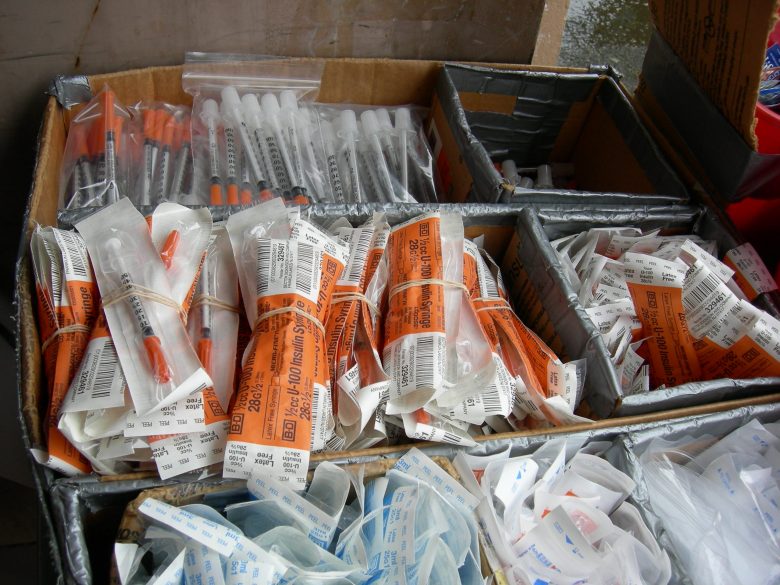Massachusetts Gov. Charlie Baker and Boston Mayor Marty Walsh have expressed skepticism over supervised injection sites as an effort to address the state’s ongoing opioid epidemic. Baker suggested that the research on safe injection sites as a “path to treatment” was inconclusive.
Safe injection sites provide a space for people to use drugs intravenously with sterilized equipment and supervision to mitigate the dangers of overdose. Some also offer counseling, medical resources and referrals to treatment. While they are illegal in the U.S., a number of sites exist elsewhere, such as in Vancouver and Sydney.
Have these sites increased drug use or thwarted people who use drugs from seeking treatment? Or do they encourage users to enter treatment? Two reviews, one published in Drug and Alcohol Dependence in 2014, and one published in 2017 in Current HIV/AIDS Reports, indicate that supervised consumption facilities promote uptake of treatment. The more recent review looked at 47 studies published between 2003 and 2017 on supervised drug consumption facilities. The authors found a handful of studies that demonstrated a positive link between safe injection site use and entry into treatment.
One of these studies compared detoxification enrollment among those who used Vancouver’s supervised injection facility in the year before and after it opened. They found the facility’s opening was linked to a 30 percent increase in detox use, which in turn was linked to pursuing long-term treatment and injecting at the facility less. A later study of the site focused on use of detox services located at the facility, and found that 11.2 percent (147 people) used these services at least once over the two years studied. The authors conclude that these findings indicate supervised injection facilities might serve as a “point of access to detoxification services.”
Another study of Vancouver’s facility, published in the New England Journal of Medicine in 2006, found “an average of at least weekly use of the supervised injecting facility and any contact with the facility’s addictions counselor were both independently associated with more rapid entry into a detoxification program.” A 2011 study of the Vancouver facility published in Drug and Alcohol Dependence offered similar conclusions, and a qualitative account of injection drug users’ experiences at the facility adds narrative backing to quantitatively documented benefits.
At a supervised injection site in Sydney, a year-and-a-half long study allowed researchers to determine that 16 percent of clients at the site referred to treatment went on to receive it, leading the authors to conclude that the center “engaged injecting drug users successfully in drug treatment referral and this was associated with presentation for drug treatment assessment and other health and psychosocial services.” Reports from this site indicate that facility clients were more likely to start treatment than non-clients (38 percent vs. 21 percent).
Though supervised injection sites are illegal in the United States, one opened underground in 2014. The findings from the first two years of the site’s operation were published in 2017 in the American Journal of Preventive Medicine. Each participant was asked the same set of questions about their use patterns every time they injected drugs at the site. From this data, the authors conclude that the site established a number of benefits, including safe disposal of equipment, unrushed injections and immediate response to overdoses. The authors add that if the site were sanctioned, it might be able to offer additional benefits, including healthcare and other services.
A concern around safe injection sites is that they increase drug use. But a study of 871 people who inject drugs found no substantial increase in rates of relapse into injected drug use among former users before and after the Vancouver site opened. However, the researchers also found no substantial decrease in the rate of stopping drug use among current users before and after the site opened. Another study of 1,065 people at this facility found that only one individual performed their first injection at the site, which counters fears that such facilities promulgate injection drug use.
Research indicates that many who use supervised injection facilities have the desire to access treatment. A study published in 2010 in the Journal of Public Health queried 889 people who were randomly selected at a supervised injection facility. “At each interview, ∼20 percent of respondents reported trying but being unable to access any type of drug or alcohol treatment in the previous 6 months,” the authors write. The main barrier to access, respondents said, was waiting lists for treatment.
Photo by Joe Mabel used under a Creative Commons license.


Expert Commentary